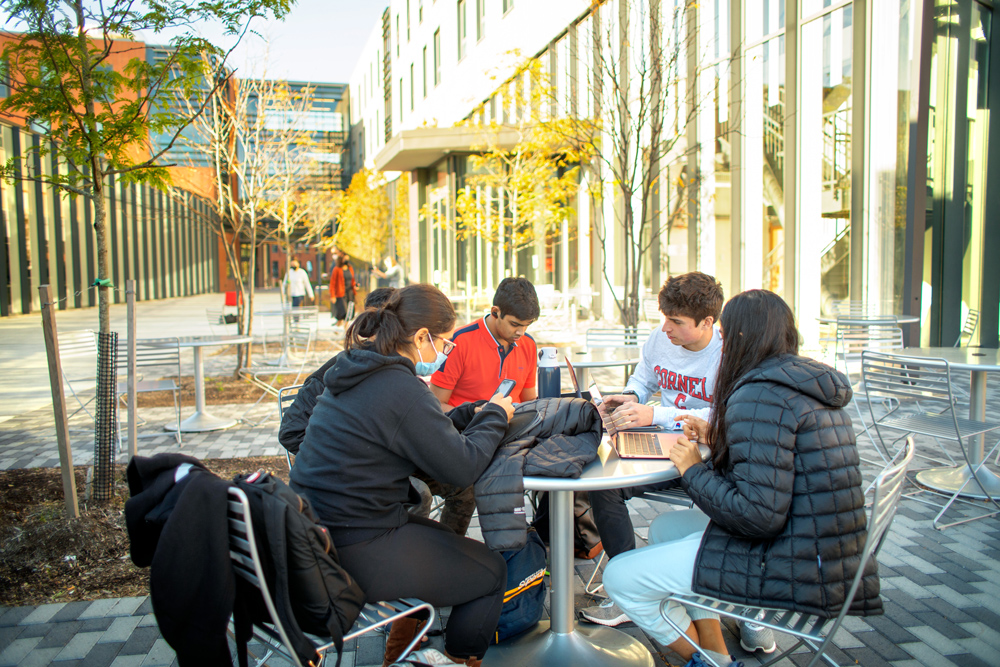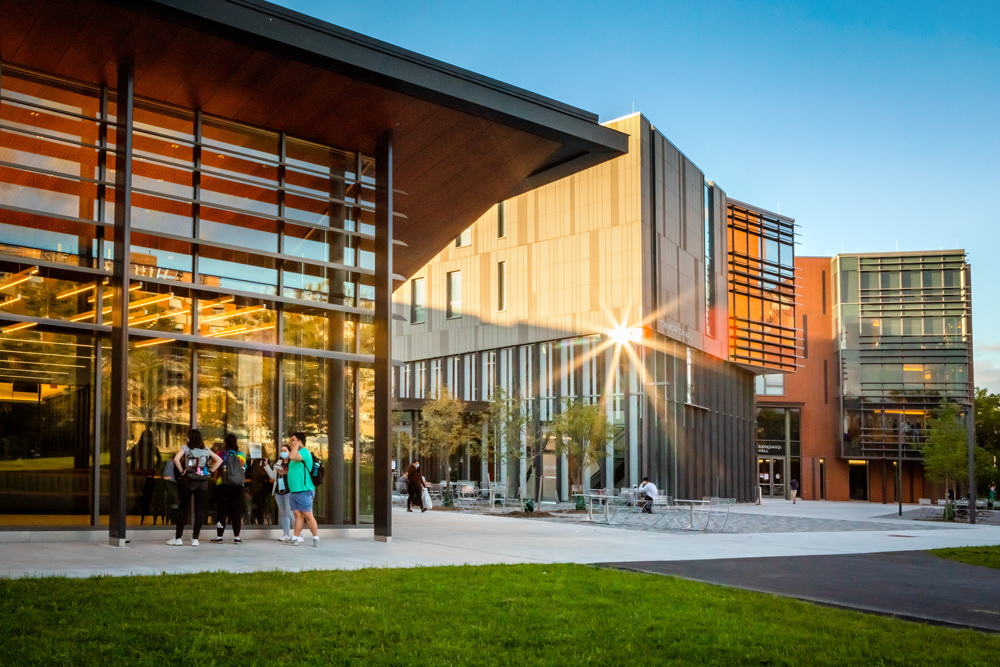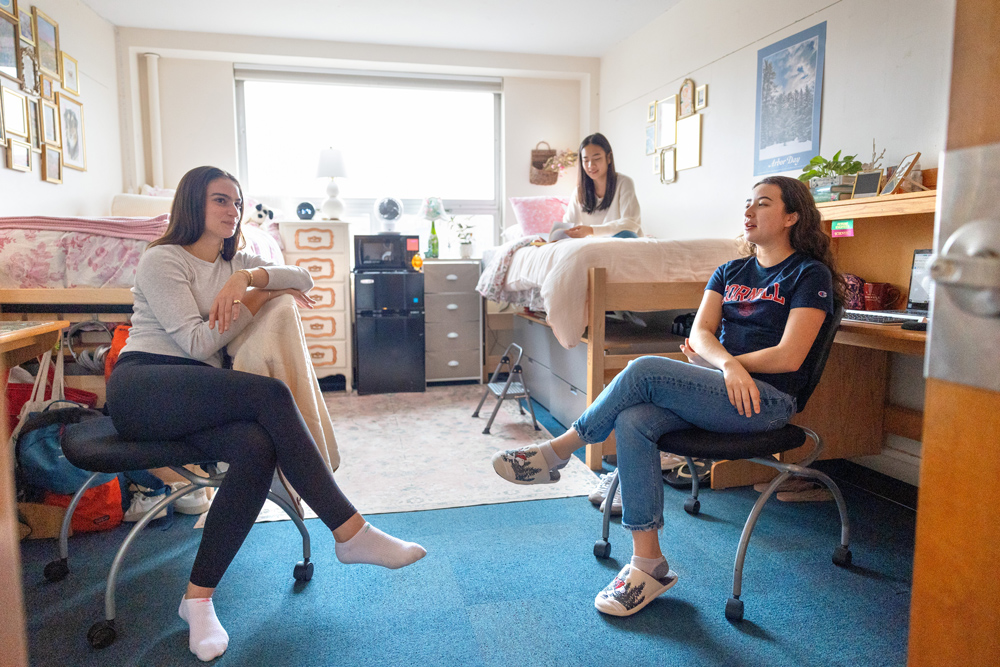Exploring Cornell’s Multitude of On-campus Living Spaces

I love living in Donlon Hall because everyone is super friendly and you're always chatting with people that you meet around the building, whether it's studying in the lounge or library, or running into someone in the elevator.
Eleanor '28
Cornell University's Housing and Residential Life – supported through Student & Campus Life – plays a vital role in shaping student success across campus. Where students live goes far beyond just providing a bed and four walls—it creates opportunities for community building, personal growth, and shared experiences.
As current and incoming students begin to picture their housing locations for the Fall 2025 semester, it is key to consider just how big of an impact these spaces can have and explore all the ways that students can connect, build community and grow during their time at Cornell.
The residential landscape at Cornell reflects a mix of historic, architecturally rich buildings alongside modern, community-focused facilities. From Gothic-era buildings steeped in history and Big Red tradition, to sleek, modern facilities specifically designed for today’s students, housing options at Cornell offer more than variety—they offer intentional, student-centered environments that reflect SCL’s core values: inclusion, support, growth, and belonging. This blend of historical and new not only provides unique living experiences but also helps cater to a variety of student needs and lifestyles.
Low Rise 6, although an older dorm, possesses a sense of community unlike any other. There are always community events, and with the proximity to unit lounges, it provides an ample environment for socializing and making friends.
Srijita K. ‘28
For example, First-year students often reside in shared residential spaces, which provide opportunities for building community and making new connections, while upper-level students may opt for suite-style or apartment living that offers greater autonomy, or the West Campus House System, which offers an engaged living experience with faculty for upper-level students.
Students seeking a close-knit community with a shared academic or cultural interest can explore the many program houses. These themed living spaces, such as the Language House, Ujamaa Residential College, Just About Music (JAM), Veterans House, Equity and Engagement Community (EEC), Latino Living Center, and Ecology House, bring together students with similar values, interests, or cultural passions, providing an environment that fosters learning and collaboration. It can also be a great way for students to grow in an immersive setting where new ideas or interests can be explored.

I love the Latino Living Center because I was able to form connections with people from all different backgrounds. I’ve formed my strongest connections through this Program House and I’ve lived with my same roommate and group of friends since freshman year.
Maria C-M. '26
This variety of options helps students transition from their first year to more independent living situations as they progress through their academic careers.
For students with accommodation needs, Cornell’s housing options are designed with inclusivity in mind. Each year, Housing and Residential Life collaborates with Student Disability Services to support the needs of hundreds of students with disabilities. In 2024-2025 we provided over 480 students with accessible housing and specialized support to fit their individual needs.
Cornell’s commitment to providing a well-rounded living experience extends beyond the physical structures. The residential experience is designed to support personal development and academic success. Many residence halls feature community spaces where students can gather for events, study sessions, or informal interactions, reinforcing the university's focus on community engagement, connection, and fostering a sense of belonging.

Additionally, the university's Housing and Residential Life staff are well-trained to offer individualized support to students as they adjust to life on campus. The team works closely with students to ensure they have the opportunities, tools, and resources they need to excel with both their academic goals and personal development. Beyond staff support and resources, they help provide an accessible community that fosters student growth based on the various developmental needs of first-year students to seniors.
I think that living on campus is a good way to really become a part of the Cornell community, especially for new students. I personally have made some of my closest friends on campus through interactions at the dining halls, or at events hosted by my residence hall.
Aarush R. '27
Ultimately, the broad diversity of housing options at Cornell helps ensure that every student can find a place to call home, tailored to their needs. Whether it’s the historic charm of the traditional residence halls, the vibrant atmosphere of the Program Houses, or the independence of Cooperative or apartment living, Cornell’s residential life is as diverse as its student body.
As we get ready to welcome a new incoming class this fall, and students start to plan for their next academic year, we encourage students to consider all the benefits of each of our residential options. Our staff will be available to support students through the transition to campus in the fall, and if students have any questions or concerns, they are encouraged to reach out to Housing and Residential Life for assistance by calling (607) 255-5368, visiting the Housing and Residential Life website, or stopping by at 1501 Clara Dickson Hall.
In an era where a supportive college experience is more important than ever, Cornell’s residential life remains a model of what’s possible when housing is designed not just to shelter—but to shape. A student’s home on campus should be a launchpad, and here at Cornell, it is.
